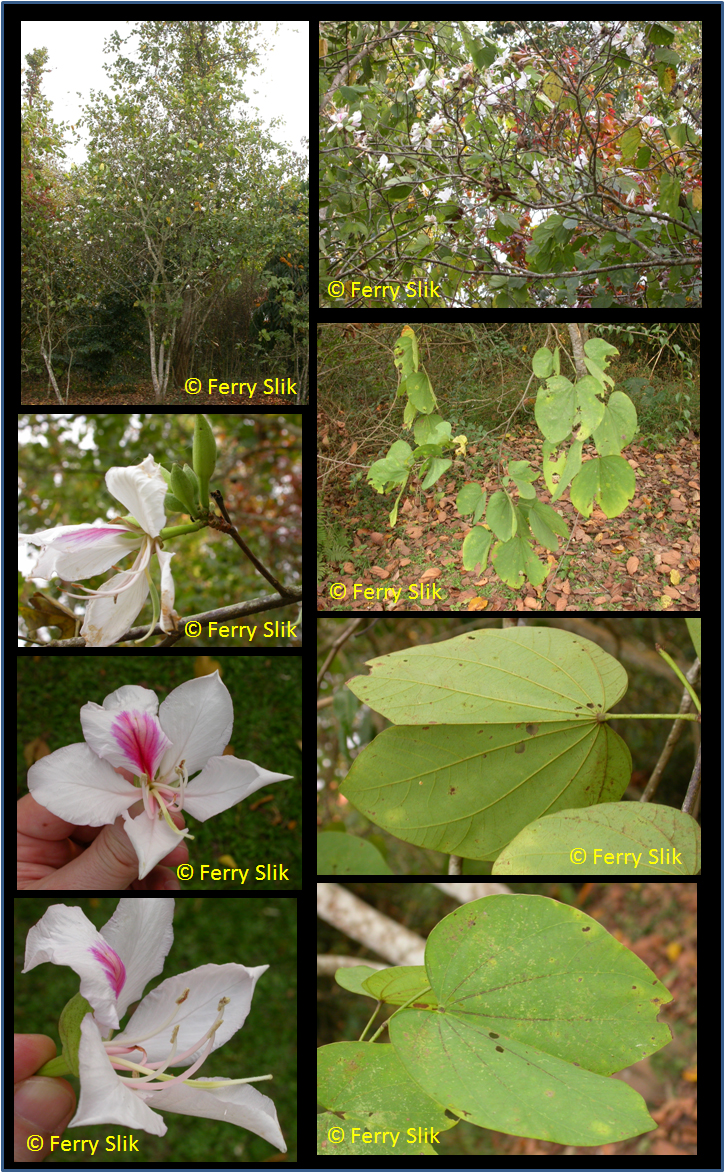Bauhinia variegata L., Sp. Pl. 1: 375 (1753)
Name meaning 'spotted', reffering to the colouration of the flowers.Synonyms
Bauhinia chinensis (DC.) Vogel
Bauhinia decora Uribe
Bauhinia variegata var. candida (Aiton) Corner
Bauhinia variegata var. chinensis DC.
Phanera variegata (L.) Benth.
Description
Trees, deciduous, to 15 m tall. Bark dark brownish, nearly smooth; branches gray puberulent when young, later glabrous.
Petiole 2.5-3.5 cm; leaf blade suborbicular or broadly ovate, 5-9 × 7-11 cm, subleathery, abaxially almost glabrous,
adaxially glabrous, primary veins 9-13, secondary and higher order veins protruding, base shallowly to deeply cordate,
apex bifid to 1/3, lobes rounded at apex. Inflorescence a raceme, few flowered, sometimes corymblike, axillary or terminal.
Flower buds fusiform, smooth, subsessile. Calyx open as a spathe into 2 lobes. Petals white, or with pink or purplish spots,
obovate or oblanceolate, 4-5 cm, clawed. Fertile stamens 5; filaments ca. as long as petals, slender. Staminodes 1-5 and
small, or ?absent. Ovary stalked, puberulent; style curved; stigma small. Legume linear, flat, 15-25 × 1.5-2 cm; valves woody.
Seeds 10-15, compressed, suborbicular, ca. 10 mm in diam. [From Flora of China]
Ecology
Tropical forests, up to 1000-1500 m. In China I have seen many growing on steep limestone mountains where they sometimes dominate and
colour whole patches of mountainside white. In gneral quite common in Xishuangbanna's seasonal forests.
Currently cultivated across the tropics.
Uses
Ornamental. In Xishuangbanna the flowers are eaten, and they taste OK to me. Acetone and methanol bark extracts of Bauhinia variegata
has shown activity against some medically important bacterial strains. It is also used to cure asthma and ulcers. The buds and roots
are good for digestive problems.
Distribution
From Pakistan and India to South China and Burma to Vietnam, Cambodia, Laos, Cambodia and Thailand.
Local names
China: Yang zi jing.
English: Camel's foot tree, Mountain ebony, Orchid tree.
India: Kachnar (Hindi), Kanchan (Bengali).
